THE ANSWER to 7 Pesky Cooking Issues
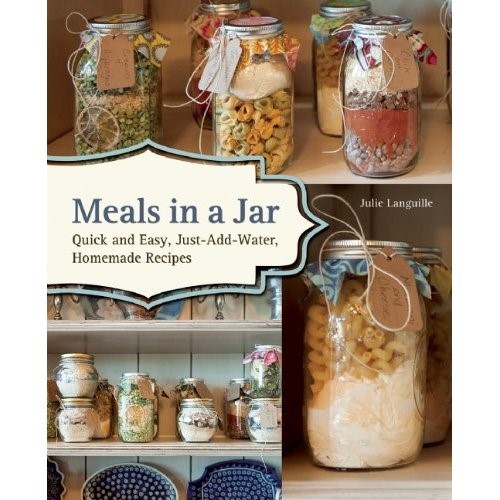
A helpful book came out a few years ago, Meals in a Jar: Quick and Easy, Just-Add-Water Homemade Recipes. I got it, used it, and liked the resulting meals. You can see from the cover of the book, these meals in jars are also attractive, so I’ve made a few and given them as gifts (this past Christmas). I also like to give “Happy Start to a Happy New Year” gifts, and my favorite meals in a jar are at the top of my gift idea list.
It’s such a great idea. Measure out all the dry ingredients for your meals and then store them in jars. When it’s time for dinner, just pour a meal into a pan, add water, and cook. It’s a nice alternative to simply storing dry foods in bulk. I love the prepared-ahead aspect of the idea. I’ve found it’s as quick as preparing a box of mac and cheese, but it’s not store-bought junk; it’s favorite dishes made from scratch.
Then I decided to branch out. Drawing from my experience with dried meals in jars, I wondered if I could do the same with perishables. I found my answer on a great foodie site, Big Red Kitchen (bigredkitchen.com). The author, Robin Sue, shows us how. I found that both approaches to meal-making (dried meals and fresh meals in a jar) takes care of 7 pesky issues:
1. Food waste
2. Meal time indecision
3. Nightly cooking demands
4. Boring, same ‘ol same ‘ol meals
5. Unhealthy, desperation meals
6. Messy refrigerator
7. Too-tired-to-cook dilemma
I’ve tried once-a-month cooking marathons, and they’ve been OK, but honestly I haven’t enjoyed these experiences. And besides, the once-a-month approach is built around frozen meals—not the best is you want fresh food. So this time I tried Robin’s method—I fixed fresh food for 4 days.
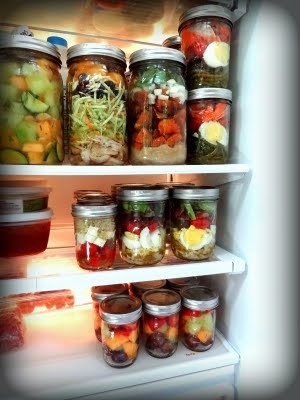
In case you like the idea, too, here’s Robin’s tutorial how-to:
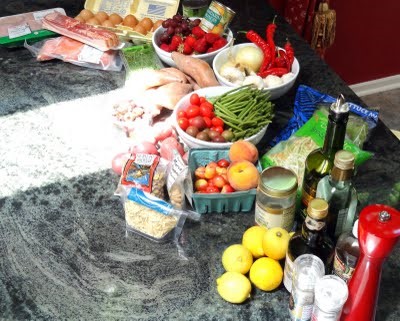
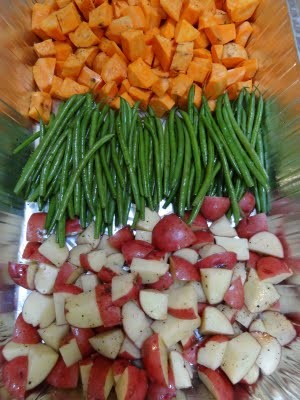
Robin shares some cooking tips:
ü Roast all vegetables in one giant pan, setting your kitchen timer for the items that need to be removed first. For instance, set the timer for 18 minutes for green beans, another 40 minutes for potatoes.
ü Cut your veggies in uniform pieces (for more even cooking), then season.
ü Roast meats in the same fashion. For instance, cook salmon and chicken together; remove fish after 18 minutes and the chicken at 22 minutes.
ü Multi-task. Fry bacon, boil grains or pastas, and hard cook eggs while the meats and vegetables are roasting.
ü Clean as you go.
ü Cool all cooked items before placing them in jars (so salads don’t wilt or other items don’t turn mushy). While food is cooling you can be shredding, dicing, and chunking things.
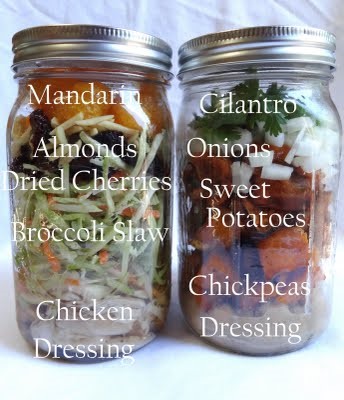
ü Pair up the right sized jar with your recipe ahead of time. Some recipes divide well in half for smaller families, while other recipes would need to be doubled for larger families.
ü Lay out all needed ingredients for a particular jar meal then start layering into the jar; always place dressings on the bottom and put more delicate ingredients on the top (leafy greens or fresh herbs, for instance); strive for even layers that are visually appealing.
ü Store items that need to remain crispy (such as noodles for a chicken ramen salad), in a small baggie and attach it to the jarred meal.
ü Freezing these jarred meals follows the same concept as freezing any meal. Only freeze items that are freezer-friendly. For instance, be sure items are cool before freezing to avoid condensation and ice crystals, and lettuce doesn’t freeze well at all.
Now it is YOUR turn. Come up with your own jar meal ideas. Start small and work up from there. These ready-made jar meals are the answer to those 7 pesky cooking issues!
- www.amazon.com
- www.bigredkitchen.com
 Alice Osborne
Alice Osborne
Weekly Newsletter Contributor since 2006
Email the author! alice@dvo.com
